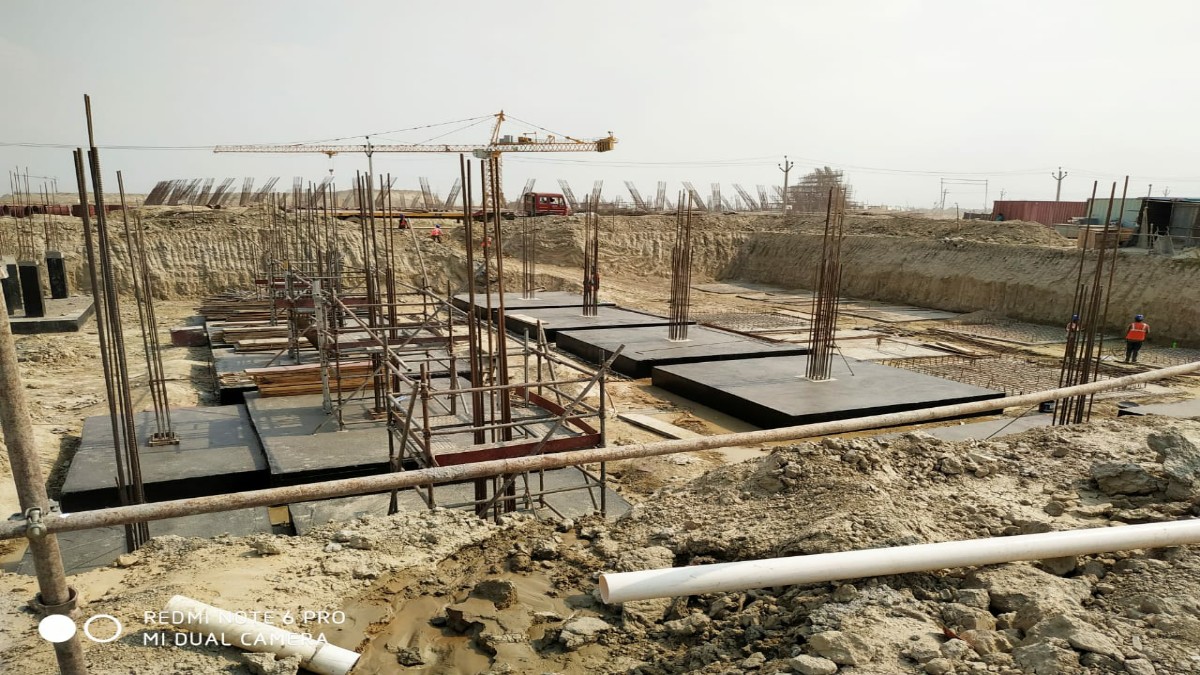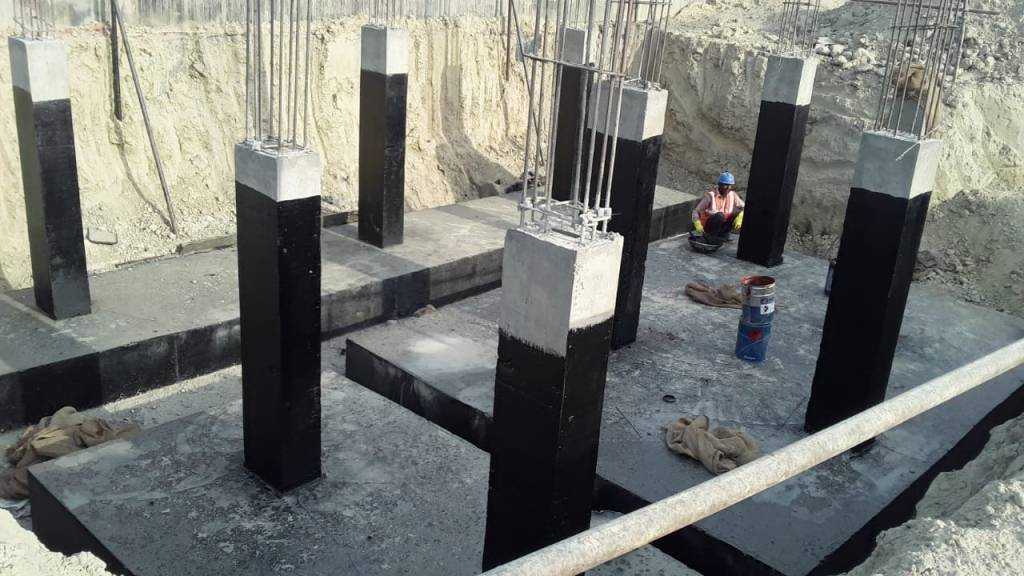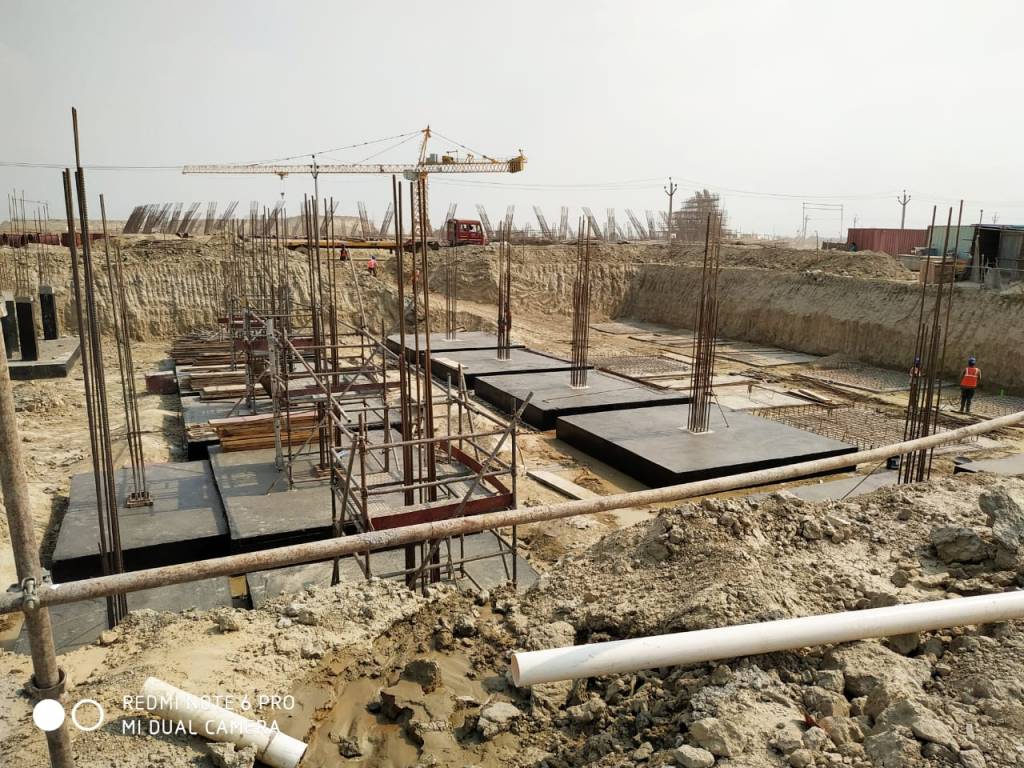Types of Raft Foundation are chosen based on a variety of criteria, including bearing capacity, applicable loads, site conditions, cost-effectiveness, etc. A raft foundation is a continuous slab resting on the soil and covering the entire area of the proposed structure. This is one of the most commonly used types of foundation in construction. Raft foundation types are classified according to their application.
- What is a raft foundation?
- Types of raft foundation – Principle
- Soil Stress Calculation
- Factors influencing the types of raft foundation
- Types of Raft foundations
- Types of raft foundations: Solid slab raft foundation
- Slab beam-type raft foundation
- Piled raft foundation
- Cellular raft foundation
- Balancing or floating raft foundation
- Advantages of the Raft foundation
- Disadvantages of raft foundations
What is a raft foundation?
A raft foundation/mat foundation is a solid slab that is placed at a specific depth and spreads across the entire structure. Raft foundations have shear walls and columns to transfer loads from the structure to the ground. These foundations are typically used when the soil’s bearing capacity is low and it becomes challenging for individual footings to handle the loads. The raft foundation aids in transferring the entire load of the structure to a larger area.
Types of Raft foundations – Youtube video
Types of raft foundations – Related articles from vincivilworld
Types of raft foundation – Principle
The raft foundation distributes the total loads from the structure over the entire area of the structure. When compared to other types of foundations used in civil construction, they can reduce soil stress. Raft foundations differ from other foundations due to this mechanism of stress distribution.
Soil Stress Calculation
stress = total load coming on the structure + self-weight of raft/ Area of raft foundation
Consider a total load is 300 T and a foundation size
Size : 20 m x 10 m
Stress on the soil = 300/200 = 1.5 t/sqm
The same structure supported with 8 individual footing
Size : 2m x 2 m
Total area = 8 x 4 = 32 sqm
Stress on soil = 300/32 = 9.375 t/sqm
This shows that same load we are getting stresses of 1.5 T/sqm for raft and 9.375 T/sqm for individual foundations.
As the contact area of the raft is more the load is distributed over a larger area and hence stresses coming on the soil are very less.
Factors influencing the types of raft foundation
Raft foundations are typically preferred over other foundations when one of the following situations arises.
- Individual footing design and pile foundation construction can be expensive when the soil’s bearing capacity is very low.
- When the soil’s bearing capacity is less and it is essential to minimise stresses that have been induced into the soil.
- The columns, shear walls, and so on are so close to each other that individual footings may overlap.
- Any other type of foundation may cover more than 50% of the total ground area beneath the structure.
- When a possibility of unequal settlement exists.
- Preferred for complex equipment foundations.
- Used when the proposed structure includes basements.
Raft foundations are appropriate for basement buildings where the foundation slabs will be subjected to direct live loads depending on the utility of the building. Raft foundations are a better choice because excavations can be finished with the aid of light excavators in areas with poor soil conditions and limited access to heavy excavation equipment.
Types of Raft foundations
The types of raft foundations are chosen based on a variety of factors, including bearing capacity, applications, cost-effectiveness, and so forth. Raft foundations are broadly categorized as follows.
- Solid Slab Raft Foundation
- Slab Beam Raft Foundation
- Piled Raft foundation
- Cellular Raft Foundation
- Balancing or Floating raft foundation
Types of raft foundations: Solid slab raft foundation
In a Solid slab raft foundation, the columns and walls are equally spaced, and the load distribution is also equal. Because they are designed as slabs of uniform thickness, these raft foundations are known as solid slab raft foundations. These foundations are reinforced with a bottom layer and a top layer.
Solid slab raft foundations are classified into four types.
- Flat raft mat foundation
- Wide toe raft
- Blanket raft foundation
- Slip plane rafts
Flat raft mat foundation
Flat raft mats are used for small buildings with uniform column spacing and a foundation that covers the entire structure. These foundations have bottom and top reinforcements.

Wide-toe raft
A wide-toe type of raft foundation is used when the structure needs to be economical. A full-size solid slab mat foundation may not be required to support the structure’s loads. In that case, a heavily reinforced toe is provided on both sides, as shown in the figure, to handle the loads.

Blanket raft foundation
Blanket rafts are used when the surface has unequal settlements or nonuniform strata. In this type of situation, stone blankets will be laid as shown in the figure on a compacted surface. The stone blankets and raft shoes help to distribute the load on the structure.
Slip plane rafts
The slip plane raft foundation has a fully compacted sand bed beneath the raft. To facilitate the transfer of loads, the sand bed size should be slightly larger than the raft size. The sides of the foundation can be filled with any compressible material.

Slab beam-type raft foundation
Slab beam-type raft foundations are used when the loads are unequally distributed and the foundation is prone to distortions. Beams included with the slabs serve as stiffeners. The raft is reinforced with two layers of mesh, one at the bottom and one at the top. The beams can offer additional stiffness and guard against distortion.
Piled raft foundation
Rafts are supported by pile foundations in this type of Mat Foundation, as illustrated in the figure. When the loads on the structure are extremely high, the soil bearing capacity is very low, and the water table is very high, these foundations are used. Piled raft foundations are ideal for high-rise buildings, and heavy industrial structures such as high-rise RCC chimneys, silos, and storage tanks that are typically supported by a single foundation element. Due to their high cost, they are not commonly used in residential applications. Piled raft foundations eliminate the need to design a very heavy raft foundation or a very conservative pile foundation with larger depths.
Instead, they opt for a combination of an optimised raft foundation and a pile foundation capable to share the loads. Over the pile foundation, the raft foundation floats. Typically used in structures such as chimneys, silos, bunkers, and overhead storage tanks where even minor soil settlement may cause the structure to fail.
Cellular raft foundation
A cellular raft is made up of two-way foundation beams with a solid slab on the ground below and a suspended slab on top. The upper and lower slabs are joined by intermediate beams, transforming the foundation into an I-beam structure.
For covering the top slab, precast soffits can be used. The top slab is cast using precast soffits or other types of permanent formwork or sacrificial formwork, and it is filled with lightweight infill blocks.
Typically used in areas subjected to heavy mining activity and with poor soil-bearing capacities. The foundations must withstand massive bending moments. They are the preferred option in these cases. Cellular rafts are used when removing overburdens resulting in increased bearing capacity. Cellular rafts can be used to control soil uplift pressure.
Balancing or floating raft foundation
Balancing rafts or floating foundations are used in areas where the soil’s bearing capacity is very low and the soil settlements must be kept within an acceptable range.
The floating foundation operates on the principle that the total weight of the soil and water removed from the excavated area must equal the weight of the proposed structure.
Advantages of the Raft foundation
- Raft foundations are a safe and cost-effective alternative to other shallow and deep foundation types.
- Raft foundations are preferred in areas with low soil bearing capacity, uneven settlement, and mixed soil types. The load-bearing capacity of these foundations is achieved by distributing stresses over a larger area.
- In densely populated urban areas, access to the sites is frequently restricted, making it impossible to mobilise heavy equipment for foundation construction using other techniques. Raft foundations can be built with very little equipment because of their low heights.
- Raft foundations, when compared to other isolated foundations, provide a much-needed option for designers in terms of limiting settlement limits within the codal provisions.
- When deciding on settlement values, the designers have the option to choose higher values when compared to standard foundations. The raft foundation prevents uneven settlement.
- Raft foundations are a very flexible design option that can be customised to the soil conditions and workability.
- The execution of a raft foundation is simpler than that of individual footings. This, in turn, can speed up the project.
Disadvantages of raft foundations
Most of the time, raft design is not considered economically when the soil conditions are extremely poor. Complex raft foundations consume a large amount of concrete and steel and necessitate precise professional/technical supervision and workmanship. As a result, the structure is more expensive than any other alternative foundation. The soil beneath the foundation, especially near the edges, must be preserved.









































